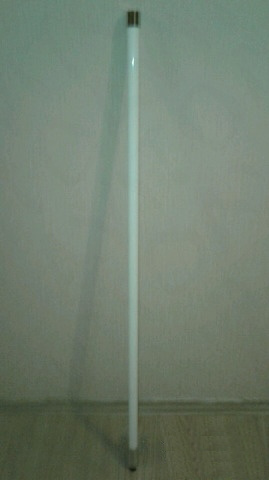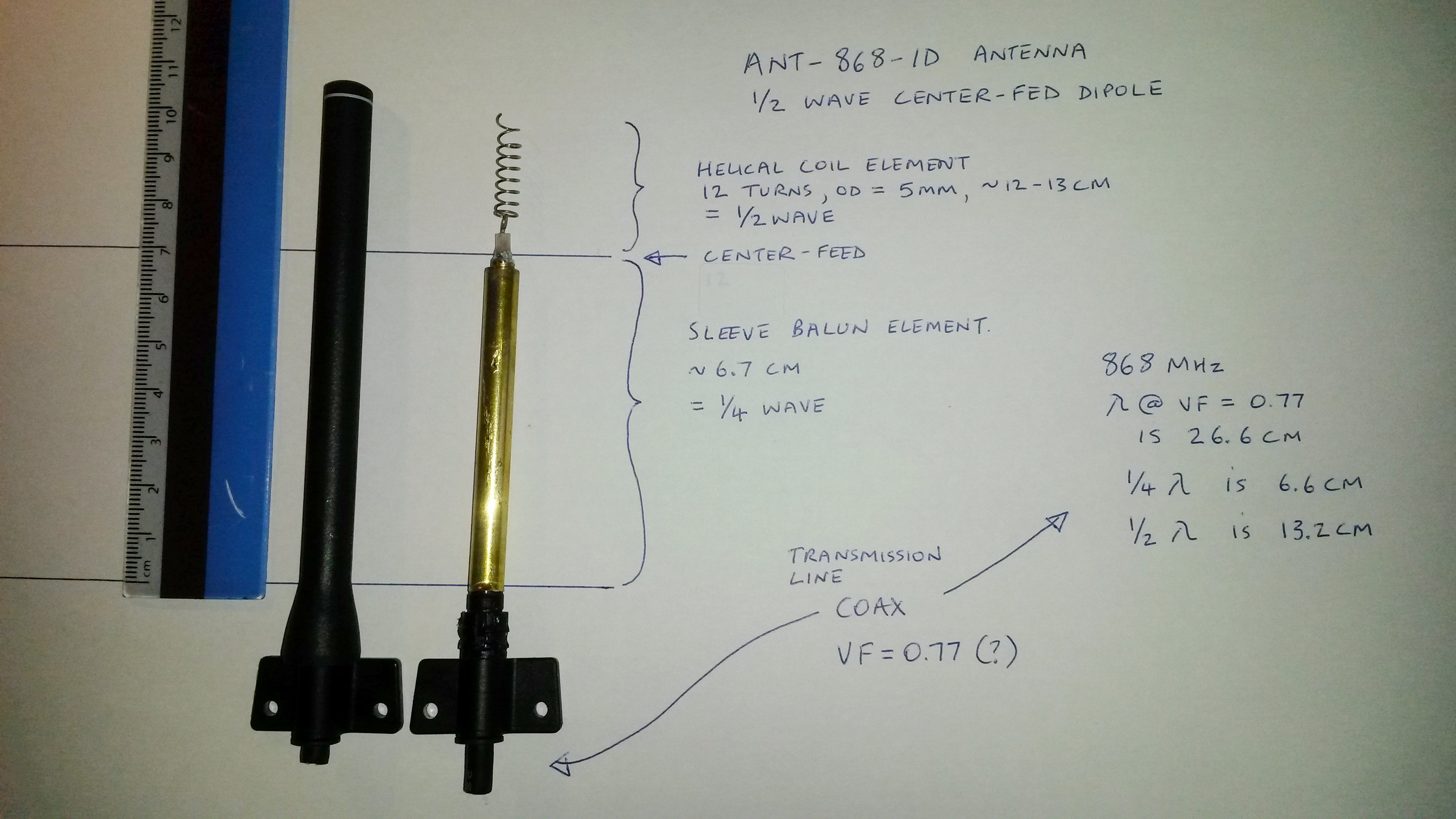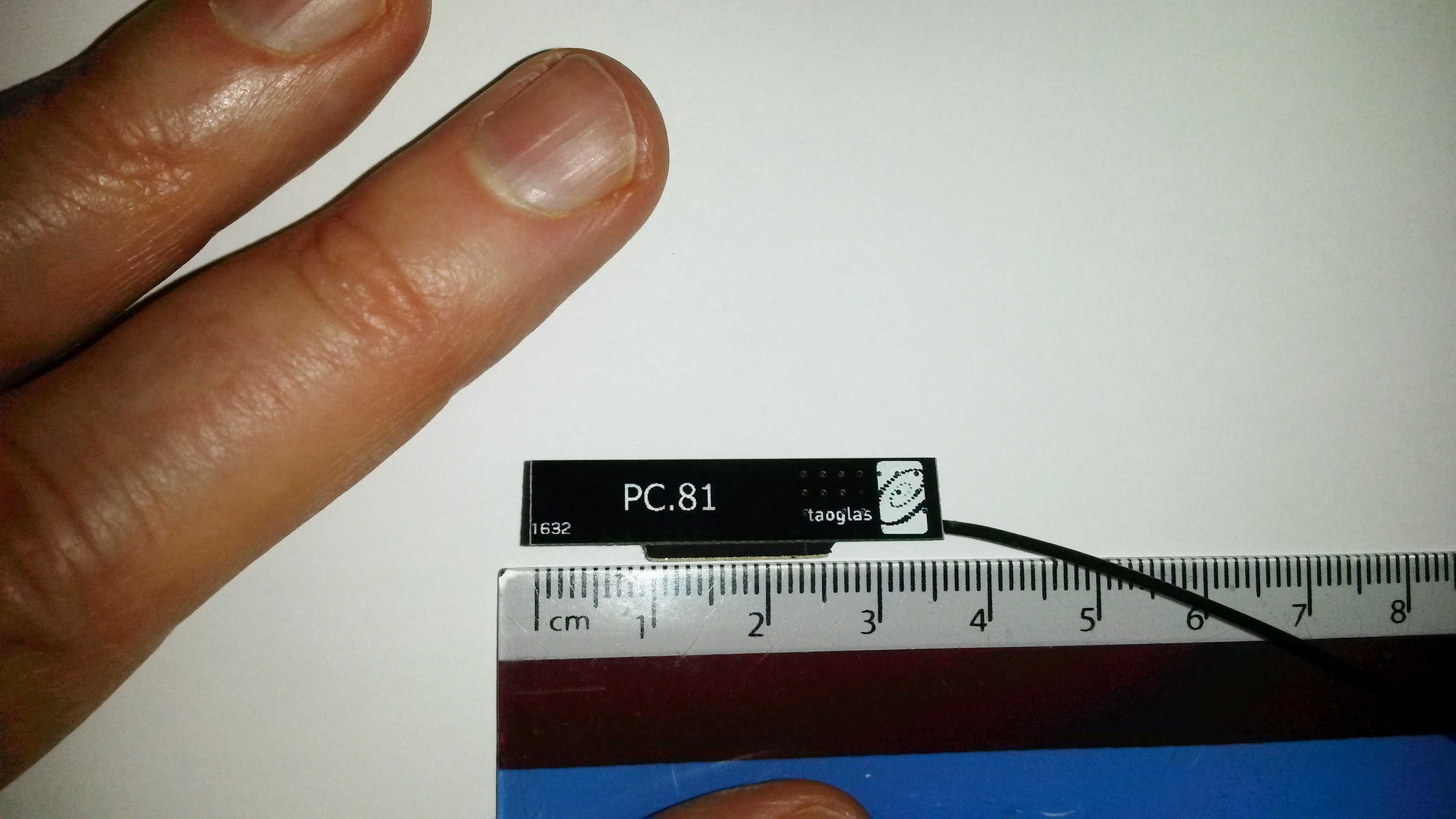Nice one. Good luck!
Does anyone know the manufacturer and model number of the standard antenna that ships to the USA with the TTN gateway? Thanks.
I have received activated & registered my The Things Gateway EU Model: TTN-001868-1.0 Backer. The activation page asked what antenna type I had. I can’t see any Antenna make, model or number ID. It doesn’t seem to matter in the registration/activation process but I’m curious…what is it? The options are:
- Blank
- Aurel GP
- GP 900C
- GP901C
- L-com HyperlinkHG 908U-Pro
@laurens can you or anyone else confirm what it is? A couple of the above seem to be outdoor mounted antennas.
Also is there a consensus agreement as to fitting an outdoor antenna to The Things Gateway is worth doing? If so which one?
Thx
Thx @BoRRoZ.
I can see there is no consensus:grinning: but it is very good input for deciding if I do it or not!
Hi Anthony - asked myself same q but took lazy route and when registering under Antenna just put TTN OoTB (TTN Out of The Box!) 
I think these are some possible options like you also filled in ‘manual’ in the non automated console set up.
they show up in your console and on the map.
Afaik the antenna specs field is just for information.
Fitting an outdoor antenna will greatly increase your range. Check this very topic for experiences and tips and tricks about outdoor antennas.
Hello!
I bought an antenna ANT 868 ON-8289-06 N-Female at 868 MHz, but I can not find its characteristics.

Hello all,
I’m building the diy antenna as described in http://martybugs.net/wireless/collinear.cgi , DIY external antenna for gateway and https://www.thethingsnetwork.org/labs/story/homemade-outdoor-868mhz-antenna. I do have a couple of questions:
- Is it useful to add a groundplane by adding three or four down pointing sticks?
- My antenna N-connector is not connected to the metal rod holding my antenna because my antenna is constructed with a PVC holder. Is that a problem?
- The last segment just says “< 3*lambda/4” and I take about 5% less. Is there an accurate calculation available or does it not matter that much?
- Is there anybody in the region of Zaanstad where I could test my antenna? Radius of about 30km is ok for me to drive.
Thanks,
Milo van der Zee

Hi everyone, I’ve had good results from using LINX ANT-868-ID antennae. I recently managed to break two of them and decided to dissect one of them to see the insides in detail - see picture. It shows a complete antenna and a dissected antenna with some notes.
The antenna is described in the datasheet as a “1/2 wave center-fed dipole”.
This might be of general interest to antenna folks and might be useful for all the people on this topic who DiY make their own antennae.
The dipole element sizing appears to be consistent with using a Velocity Factor in the RG-58/U coax transmission-line of 0.77.
I think that the sleeve balun is brass but it might be copper.
CORRECTION to notes on picture: the helical coil has 8 turns (not 12).
Hey Milo,
Maybe we can put it on my gateway, Hoofddorppleinbuurt Amsterdam and compare it to the diy 1/4 wave gpa that I have installed at the moment.
https://ttnmapper.org/?gateway=B827EBFFFE706141&type=alpha
Some antenna questions:
I have opened several antennas myself before to see what is inside.
How can you calculate the frequency based on the antenna size?
I tried some online calculators but these only allow certain input parameters (where frequency is one of the required input parameters) but not the parameters I would like to input for calculating the frequency.
What is the coil diameter that should be used for calculations? I would expect the average of the outer and inner diameter, because it is the center of the wire that is determining the total wire length.
Which of the following aspects are important to determine for which frequency an antenna is made?
(Assuming an antenna with single coil and uniform distance between coil turns):
For the dipole part connected to the center wire:
- lower part length (straight part from center feed to coil)
- coil diameter I assume one should us (outer+inner)/2
- distance between two adjacent turns
- number of turns
- upper part length (straight part from end of coil to top, if present)
For the dipole counterpoise that is grounded:
- length (center feed to bottom)
If I read correctly:
- Both ‘poles’ of a ‘half-wave dipole’ should each be one quarter-wave length in length.
- The grounded part, the counterpoise (like a ground plane) may be larger but larger will lower the center frequency and widen the bandwidth. Making it smaller will have a major impact (reduce) the performance.
Do you have a link for good information about the Velocity Factor?
Hi @bluejedi.
If I was presented with this dissected antenna and asked to estimate the frequency, I would do the following:
(1) Look at the coax feed line and if it is RG-58 or better then I would use VF=0.77 and if it has a thinner core then I would use VF=0.65.
(2) Measure the length of the sleeve balun. Guess that it is probably 1/4 wave.
(3) Straighten out the helical coil and measure its length. Usually 1/4 wave or 1/2 wave.
(4) I would then try and find a number that works for (2) and (3) as the wavelength in the coax.
(5) I would then increase it using the VF to estimate wavelength in vacuum.
(6) I would then calculate the frequency and then look at known bands.
For the coil I looked at the OD (about 5mm). My guess is that it was wound onto a 4mm or 4.5mm form. Because of the straight part soldered to the coax core and the diameter range (4mm to 5mm) I estimated the effective length on the notes at 12cm to 13cm. I would use (3) above to be more precise.
I think that the overall length of your “dipole part connected to the center wire” is the key to the resonant frequency.
You are correct that a “1/2 wave center-fed” dipole is normally considered to have a 1/4 wave length on each side. I posted the picture because I was interested to see that the upper coil is 1/2 wavelength.
It’s almost 40 years since I studied electrical engineering and telecom at university and since then I have cheated on VFs (like everyone else) by either looking at the cable manufacturer’s datasheets or by assuming 0.85 (LMR400), 0.77 (RG58) or 0.65 (cheap/thin/UTP/etc). There’s a small article on wikipedia about VFs and, as usual, google has lots of links.
Actually I cheat even worse… after a working life in telecom, I just buy the cables and antennae pre-made and matching from good manufacturers. I read this topic because I really admire all the brave DiY folks who build their own antennae and then try to understand the results.
If I look at the picture of your antenna I can see that the center feed is on top of the brass tube.
I cannot see if the tube is also soldered to the cable shielding on the bottom side. Would it in that case still be correct to call this a (sleeve) balun? I understand that the tube shields the cable shielding but would that still be called a balun? (Just trying to learn…)
Hi @bluejedi, the brass/copper sleeve is only soldered to the coax shield at the “top” (ie at the center-feed point). The main part of the sleeve is outside the coax plastic sheath. I have always heard this interchangeably called a sleeved dipole or a sleeve balun.
I got puzzled about ‘balun sleeve’ because of what I read here:
http://www.antenna-theory.com/definitions/balun.php
http://www.tuks.nl/img/sleeve.html
(But those are only two articles I found, there may be other possibilities.)

Am I allowed to post this here or do I need to start a new topic called “The SMALL ANTENNA topic part 1”? I hope to compare (vs. dipole) this weekend if anyone is interested (possible).
After that it will be potted in ATEX / Ex m certified compound for potential use in hazardous locations if anyone is interested (unlikely).
It is OK to post about small antennas here. 
That question was already asked before.
The title may be confusing but should be read as BIG “ANTENNA topic”.
You mean the big big and small antenna topic 

It’s a pity that in many cases putting a ‘gateway’ outdoors involves much more then just buying an external antenna, e.g. requires proper mounting and proper lightning protection which can easily cost (much) more than the price of a gateway (e.g. RAK831 + RPi) when these facilities are not already available.
This will probably withhold many people with cheaper gateways (e.g. iC880A or RAK831 based and The Things Network gateway) from placing an antenna outdoors.